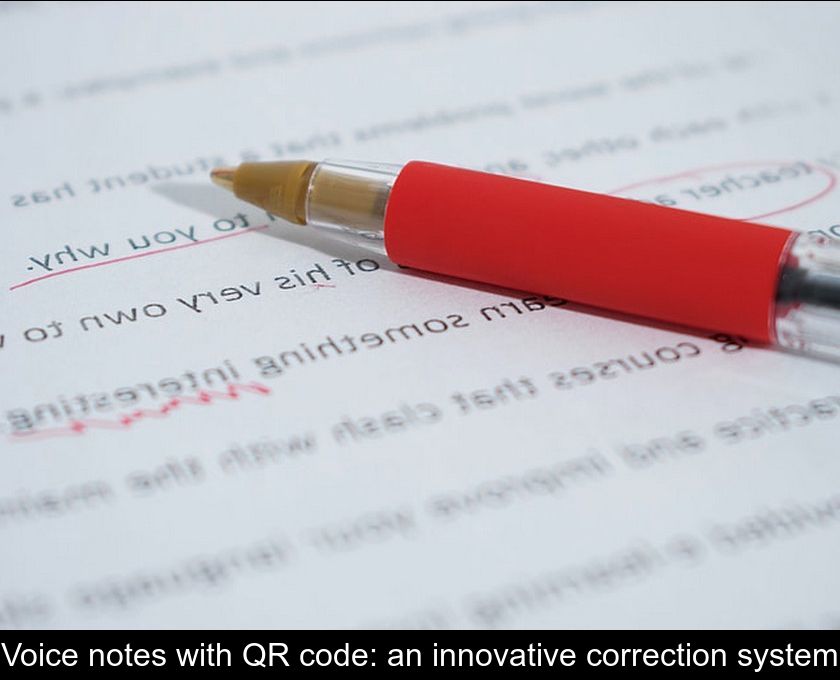Voice Notes With Qr Code: An Innovative Correction System
If you have bad memories of your school days due to grades and red pen annotations on your papers, know that a revolution is underway in some schools. Teachers have indeed decided to complement the traditional grading system with voice notes, accessible to students via a QR code. Explanations.
Why change our grading system?
Education specialists agree that grades are a source of stress for students, but also for parents and even for teachers sometimes held responsible for a poor result...
To make matters worse, the grade written in red pen on a paper provides an imprecise assessment of the student's skills, and any comments written by the teacher in the margin do not always suffice to compensate for this imprecision.
To address this double problem, some teachers are testing a new method: voice notes that the student accesses via a QR code attached to their paper!
How do voice notes work?
Voice notes are a new correction method currently being tested by teachers in the academies of Poitiers, Créteil, and Nantes.
Instead of writing their observations on the papers with a red pen, teachers record them aloud. Students can then listen to these comments via a platform or a QR code that the teacher prints and attaches to the paper.
This innovation aims to make the correction of papers more humane and personalized, as verbal explanations are generally more considerate and detailed than a terse sentence in red pen.
Some teachers adopted this vocal comment system during the health crisis to recreate a connection with their students during lockdowns.
What are the advantages and disadvantages of this method?
Teachers who have tested and adopted this new system emphasize that voice notes allow for a more personalized correction for the student.
Thanks to spoken feedback, the teacher no longer settles for a general comment. They can highlight the strengths and weaknesses of an assignment and give advice on specific points to work on, making the correction more constructive.
This innovation also helps to de-dramatize the grade written on the paper and the student's potential mistakes. Pisa assessments in France have shown that French students answer fewer questions than children from other countries... out of fear of making mistakes!
This new way of correcting papers is an interesting avenue to make our educational system more supportive. Voice correction also has pedagogical benefits for all students with special needs, due to a different native language, dyslexia, or another learning disorder...
However, this method has a major drawback: it is very time-consuming for teachers. When class sizes exceed 25 students, recording a relevant voice message for each student inevitably lengthens the correction time...
This is why, even in the academies testing this system, audio correction is not used for all assignments. Teachers reserve it for the most important assignments, to draw students' attention to points to review and errors to correct.
And it works: while written comments in red in the margin are often ignored by students disappointed by their grade, audio correction captures more of their attention. The teacher can even send their comments to each student before returning the paper, which forces the child to listen to the teacher's remarks and advice.
This form of correction, more nuanced and individualized, becomes once again a means for the student to progress. Teachers have also noticed another indirect benefit of this method, especially in priority education network (REP) classes: relationships between students and teachers are better and more relaxed.
For now, the Ministry of National Education has not given any specific directives on this subject and leaves teachers free to correct papers as they see fit.








